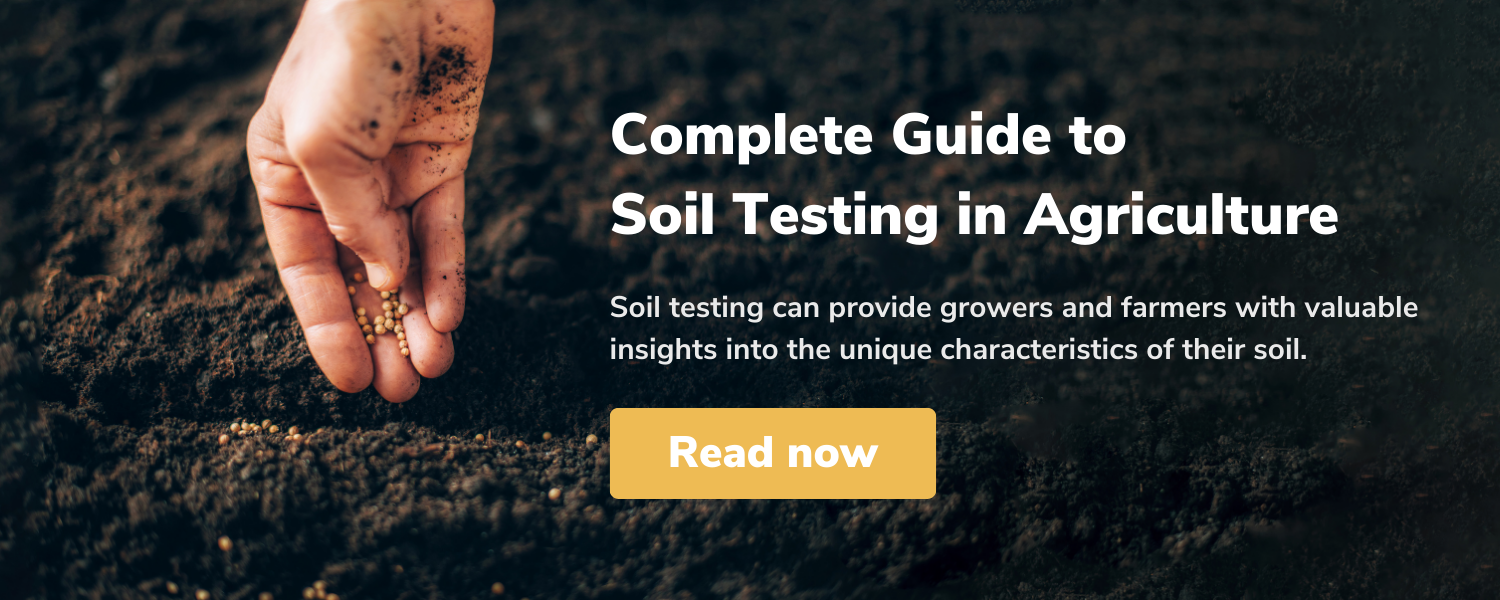Share this
Soil Health Glossary
by Juan Vicente Beneitez Lajas on 28/Apr/22
Top terms you need to know about SOIL HEALTH
The Soil Health concept is wide and complex, as it involves multiple elements and approaches. In this Soil Health Glossary, we gather key elements to take into account when exploring the topic of soil health. This glossary is an ongoing project that we will continue to update with new relevant soil health principles to help create a comprehensive understanding of this key element in regenerative agriculture.
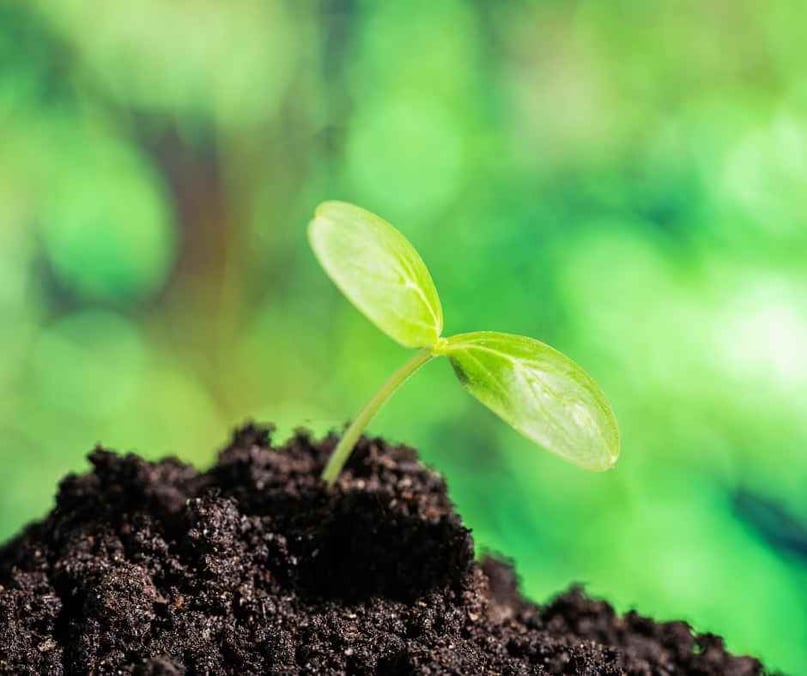
Soil Health
The soil is essential for sustaining life and promoting the health of plants, animals, and humans. It helps to purify the air and water, and is a vital part of the ecosystem. (1) Soil health is the ability of soil to function as a vital living ecosystem. It sustains plants, animals, and humans.
Only "living" things can have health, so viewing soil as a living ecosystem reflects a fundamental shift in the way we care for our soils. Soil health is the soil’s capacity to function as a living system. Soil should be capable of ensuring sufficient plant growth to maintain an ecosystem. Soil health is essential for preserving natural resources and maintaining ecosystem services like air and water quality, biodiversity, and the health of plants, animals, and humans.
Soil health has evolved to include more biological components and processes, whereas soil quality focuses mainly on physical and chemical fertility. Hence, soil health is a keystone principle in the agroecological transition perspective. (3)
Check out this list of Top Soil Health blogs >>

Biocontrol
Use of microorganisms having disease-suppressive capabilities to improve plant health. The ability of biocontrol agents to suppress disease is the result of interactions between the plant, pathogen, biocontrol agent, and the microbial community around the plant. In Becrop reports, this biomarker is based on the relative abundance of beneficial microorganisms known to perform roles of fungicide, bactericide, nematicide, and insecticide biocontrol.

Biosustainability
In the soil health test, BeCrop, three indexes are calculated, among them is Biosustainability. Its indices are biomarkers of the ecosystem in which the parcel is based, and are related to agricultural management practices. Three indexes are calculated based on the detection of all the microorganisms in the samples. Low values may indicate of intensive management practices, while high indexes are linked to sustainable and less intensive practices.
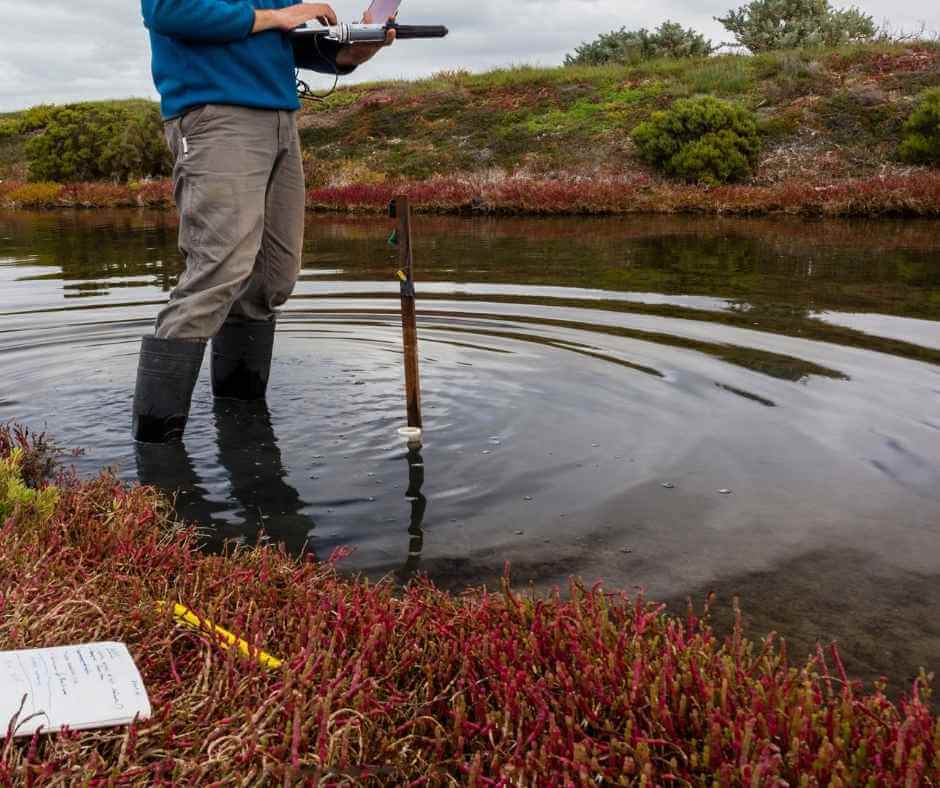
Carbon sequestration
Carbon sequestration is the process of capturing and storing carbon to reduce global warming and climate change.
Increased carbon dioxide concentrations in the atmosphere have resulted in growing concerns about climate change. The interest in improving soil health and increasing the rate of carbon sequestration has been drawn through changes in sustainable agriculture land use and forestry.
Carbon farming
Carbon farming practices might include reduced tillage, cover crops, & diversifying crop rotations. These sustainable land management practices can strengthen your soil equity and preserve farmland value.
Carbon markets are still in their beginning stages, and with the increased urgency of climate change mitigation, are likely going to be playing a big role in setting the new standards through compliance-based or incentive-based programs, or both. In any case, agricultural soil carbon sequestration has become front and center in the fight against climate change and is becoming an increasingly valuable farm asset.

Crop Healthiness
Crop health according to the detected pathogens. It is calculated using epidemiological information and the vulnerability of the microbial ecosystem analyzed. Is established depending on the risk of developing diseases detected.

DNA Sequencing & Measuring Soil Health
Sequencing DNA means determining the order of the four chemical building blocks - called "bases" - that make up the DNA molecule. The nucleotide sequence is the most fundamental level of knowledge of a gene or genome. It is the blueprint that contains the instructions for building an organism. In other words, sequencing consists in transforming the information contained in DNA into data that can be analyzed informatically and used to identify microbes, among many other things

Plant nutrition (nutrition pathways)
Plant growth and development largely depend on the combination and concentration of mineral nutrients available in the soil. Two classes of nutrients are considered essential for plants: macronutrients and micronutrients.
Macronutrients are the building blocks of crucial cellular components like proteins and nucleic acids; as the name suggests, they are required in large quantities. Nitrogen, phosphorus, magnesium, and potassium are some of the most important macronutrients. Carbon, hydrogen, and oxygen are needed in large amounts to make the cell's larger molecules, but they aren't minerals.
Micronutrients, including iron, zinc, manganese, and copper, are required in very small amounts. Micronutrients are often required as cofactors for enzyme activity. Mineral nutrients are usually obtained from the soil through plant roots, but many factors can affect the efficiency of nutrient acquisition.
First, the chemistry and composition of certain soils can make it harder for plants to absorb nutrients. The nutrients may not be available in certain soils, or may be present in forms that the plants cannot use. (12)
Soil microorganisms are responsible for the cycling of many nutrients in the soil, metabolizing organic forms, and providing plants with available nutrient forms. This is especially important in providing the plant with available forms of Nitrogen, Phosphorus, Potassium, Sulfur, and Calcium among other elements.
Plant nutrient Imbalance
Refers to an excess or lack of nutrients in the soil as a consequence of poor land use and management. It may result in soil contamination when nutrients are in excess and in loss of inherent fertility when nutrients are mined. (FAO)
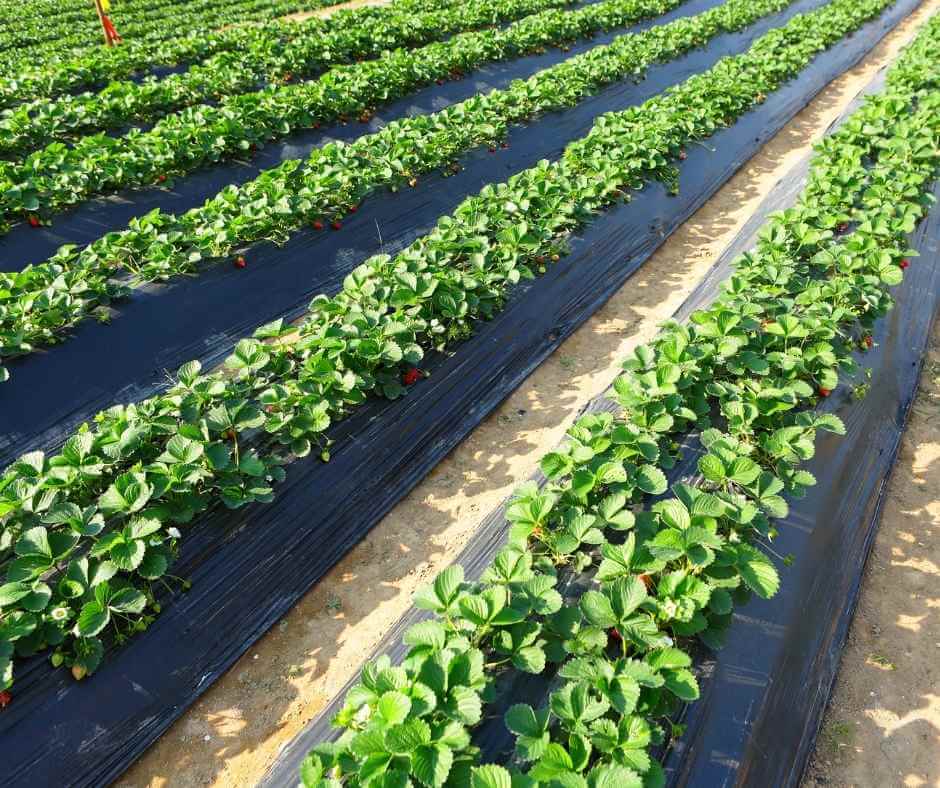
Plant nutrient mobilization
Once inside plants, nutrients are transported to where they are needed, typically to growing points. Once incorporated by the plant, some elements can be immobile while others can be remobilized. Immobile elements essentially get locked in place and that is where they stay. Those that can be remobilized can leave their original location and move to areas of greater demand.
Knowing which are mobile or immobile is helpful in diagnosing deficiency symptoms.
Since immobile elements do not easily move within the plant when deficiency symptoms occur they show up in new growth. Mobile elements can become limiting, causing deficiency symptoms in older growth. Scavenging older growth can help to alleviate these symptoms. (14)
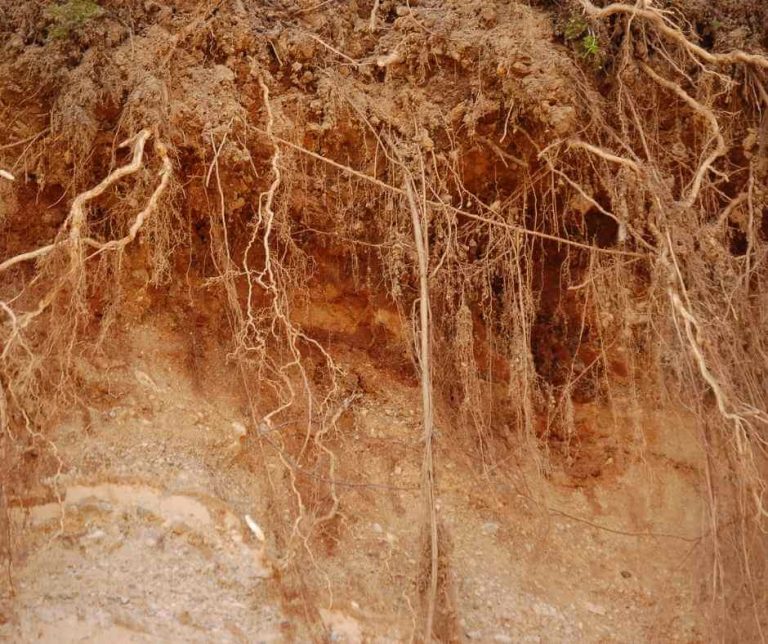
Rhizosphere
Area of soil affected by live root secretions and microorganisms

Soil biodiversity (soil biota)
Diversity of (micro- and macro-) organisms present in the soil. It is assessed by calculating taxonomic diversity and converting it into a contextualized and meaningful score. (6)
Soil microorganisms carry out important processes, including support of plant growth and cycling of carbon and other nutrients. Lack or loss of soil biodiversity diminishes the ability of soil to provide critical ecosystem services e.g., food security and healthy food systems, air and water quality, biodiversity and more. (FAO).
The largest and most populous group in soil biota are microorganisms (bacteria, archaea, and fungi), which have different nutrient strategies and lifestyles (saprotrophs, pathogens, symbionts).
The rhizosphere also contains nematodes, microarthropods (mites and collembola), enchytraeids, and earthworms. Nematodes are considered very important in the soil food web. Some nematode species are considered pests because they can damage crops, but others can be used to control insect pests without using pesticides. (7)
Soil biodiversity is important for human health because it can help prevent the spread of diseases and improve air and water quality. (3). Soil serves as a primary reservoir for plant-colonizing bacteria (4), which play a major role in determining plant productivity (5) and preventing invasion by bacterial pathogens (6). (8)
Soil Functionality
Microorganism functionality: Capability of soil microbial communities to perform multiple functions. It is assessed based on the predicted functional profile. (9)
- Regulating water - Soil helps control where rain, snowmelt, and irrigation water goes. Water and dissolved solutes flow over the land or into and through the soil.
- Sustaining plant and animal life - The diversity and productivity of living things depend on soil.
- Soil minerals and microbes filter, buffer, degrade, immobilize, and detoxify organic and inorganic materials, including industrial and municipal by-products and atmospheric deposits.
- Cycling nutrients - Carbon, nitrogen, phosphorus, and many other nutrients are stored, transformed, and cycled in the soil.
- Physical stability and support - Soil structure provides a medium for plant roots. Soils also provide support for human structures and protection for archeological treasures. (10)
Soil quality / health indicator
A chemical, physical or biological property of soil that is sensitive to disturbance and represents the performance of ecosystem function in that soil is of interest. These are dynamic soil properties. Some studies have explored how variation in the initial soil microbiome predicts future disease outcomes at the level of individual plants. (5)

Terroir characterization
Vitivinicultural “Terroir” is a concept that refers to an area in which collective knowledge of the interactions between the identifiable physical and biological environment and applied vitivinicultural practices develops. Vitivinicultural practices provide distinctive characteristics for the products originating from this area. “Terroir” includes specific soil, topography, climate, landscape characteristics, and biodiversity features. (15)
Cover Crops
Keeping the ground covered can reduce the heat, store water, provide habitat for microbial communities, and protect the soil from impact. Microorganisms are our allies against plant diseases, pests, erosion, and even gas emissions.
Agroforestry
Agroforestry is a land management strategy that utilizes five key techniques: riparian buffers, windbreaks, alley-cropping, forest farming, and silvopasture. This strategy requires 4 I's to be implemented while using the techniques listed above: intensive, integrated, intentional, and interactive (17).
Riparian Buffers
Riparian forest buffers are strips of permanent vegetation e.g., trees, shrubs, and grasses. These plants are situated between agricultural land and water bodies (rivers, streams, creeks, lakes, wetlands) to reduce runoff and non-point source pollution. (17)
Windbreaks
Windbreaks are linear trees and shrubs planted. The purpose is to slow the wind which creates a more beneficial condition for soils and crops among other reasons. Windbreak practices control soil erosion and enhance crop production by protecting sensitive crops from intense weather. (17)
Silvopasture
Silvopasture is the integration of trees and rotational grazing; livestock operations share space on the same farm as crop production. This practice combines trees with forage (pasture or hay) and livestock. The trees can provide food, fuel, fodder, and fiber for both livestock and human consumption. (17)
Alley-cropping
Alley-cropping combines trees planted in single or multiple rows with agricultural or horticultural crops cultivated in the wide alleys between the tree rows. Specialty crops can be grown in alleys, utilizing the microclimate created by trees to stimulate soil organic matter, protect the soil, and serve as a powerful tool for carbon capture. (17)
Soil Restoration
Soil restoration is the intention of improving the overall soil quality, health, fertility, and biological functions of the soil. It is the process of improving the soil structure, soil microbiome, and nutrient density through various farming and land management practices. (18)
Soil Infiltration
Soil infiltration is the soil’s ability to allow water movement through the soil structure. It allows the soil to store water temporarily and facilitate plant and soil organisms to uptake water and nutrients.
No-till
No-till is a management practice that consists of not tilling or reducing the tilling on farmland in order to improve soil health and promote a healthy ecosystem for microorganisms that live in the ground.
Biologicals
Biologicals are agricultural inputs that may supplement nutrients or other mechanisms for crops in the soil. There are a variety of biologicals that farmers can use to alter the makeup of their soil structure and change the state of their crop production. Check out this Q&A with our founder, Adrian Ferrero, to learn more about How the Perception of Biostimulants Has Changed and where the industry could be headed.
Soil Microbiome
The soil microbiome makes up a community of microorganisms that live and interact in the soil, providing various functions for the soil. This community includes bacteria, archaea, and fungi, all of which have positive and negative effects on the aboveground ecosystems that they interact with.
Soil Biology
Soil biology refers to the soil as a living, breathing, and interacting ecosystem. The biological functions of the soil affect agriculture, air and water quality, biodiversity, and so much more.
Regenerative Agriculture
Using a systems-based perspective, regenerative agriculture sequesters carbon in the soil and intentionally improves soil health, biodiversity, water quality, and air quality while ensuring the viability of farm production. The principles of a regenerative agriculture system are based on Indigenous ways of land management and are adaptive to local physical conditions and culture (Field2Market).
Bibliography
(1) (Doran, Stamatiadis and Haberern, 2002). FAO and ITPS. 2015. Status of the World’s Soil Resources (SWSR) – Main Report.
(2) NRCS - USDA
(3) Food and Agriculture Organization of the united nations (FAO). 2011. Save and Grow : A policymaker’s guide to the sustainable intensification of smallholder crop production. FAO, 2011. 112p. ISBN 978-92-5-106871-7
(4) NRCS
(5) https://advances.sciencemag.org/content/5/9/eaaw0759
(6) BeCrop Guide
(7) Science Direct: https://www.sciencedirect.com/topics/earth-and-planetary-sciences/soil-function
(8) Microbiome Journal. https://microbiomejournal.biomedcentral.com/articles/10.1186/s40168-019-0758-7 Coller, E., Cestaro, A., Zanzotti, R. et al. Microbiome of vineyard soils is shaped by geography and management. Microbiome 7, 140 (2019). https://doi.org/10.1186/s40168-019-0758-7 https://rdcu.be/b6aO9
(9) Science Direct: https://www.sciencedirect.com/topics/earth-and-planetary-sciences/soil-function
(10) https://www.nrcs.usda.gov/wps/portal/nrcs/main/soils/health/
(11) The Plant Cell. Jo Handelsman‘ and Eric V. Stabb Department of Plant Pathology, University of Wisconsin. https://academic.oup.com/plcell/article/8/10/1855/5985232
(12) The Nature Education. https://www.nature.com/scitable/knowledge/library/plant-soil-interactions-nutrient-uptake-105289112/
(13) Hodrien, Chris (October 24, 2008). Squaring the Circle on Coal – Carbon Capture and Storage. Claverton Energy Group Conference, Bath (via Wikipedia).
(14) Michigan State University
(15) OIV definition
(16) USDA Agroforestry Strategic Framework: Fiscal Year 2019-2024
(17) University of Missouri, Center for Agroforestry
(18) NCRS Urban Soil Quality Restoration
Originally published Sep 24, 2020, updated April 28, 2022
Share this
- June 2025 (2)
- September 2024 (1)
- August 2024 (1)
- July 2024 (1)
- June 2024 (2)
- May 2024 (2)
- April 2024 (2)
- March 2024 (1)
- February 2024 (1)
- January 2024 (1)
- November 2023 (1)
- October 2023 (1)
- September 2023 (1)
- August 2023 (2)
- July 2023 (2)
- May 2023 (2)
- April 2023 (3)
- March 2023 (3)
- February 2023 (2)
- January 2023 (1)
- November 2022 (1)
- October 2022 (2)
- September 2022 (1)
- August 2022 (3)
- July 2022 (3)
- June 2022 (1)
- May 2022 (5)
- April 2022 (7)
- August 2021 (1)
- July 2021 (1)
- May 2021 (1)
- April 2021 (4)
- November 2020 (3)
- October 2020 (4)
- September 2020 (1)
- August 2020 (3)
- July 2020 (1)
- June 2020 (1)
- May 2020 (2)

